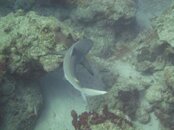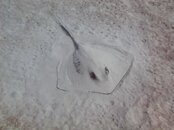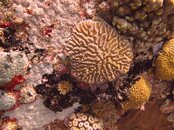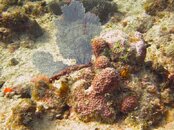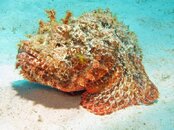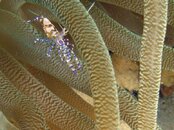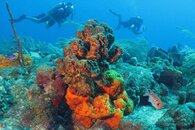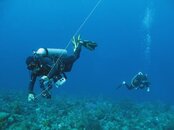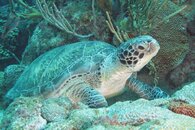Funland111
Registered
During a recent trip to St Croix one of my main goals was to improve the quality of my photos. My equipment consists of a G12 with the Canon housing and an ikelite AF35 strobe. For the first time I used the custom white balance prior to each shot with the G12 set on program mode. My photos definitely improved, but I think it was a mistake solely using the program mode setting (when not using the strobe). I'm heading to the Cocos Islands next month, which will be my last dive trip for quite a while due to my business responsibilities, so I want to make the most of this opportunity. Question 1 - the following are my camera settings and hopefully I'm in the ballpark: C2(strobe) = WB flash, f5.6, 1/125, Iso 200, raw, int flash on.
C1 = WB Custom, f5.6, Iso 200, jpeg - lets me switch to video and retain the same WB setting.
M= WB Custom, f5.6, Iso 200, jpeg
Av= WB Custom, f5.6, Iso 200, jpeg
Tv= WB Custm, 1/80, Iso 200, jpeg
For my non-strobe shots I was plaining to start with the C1 or Av setting and for faster motion use the Tv setting -- any thoughts. Final question is that we will be doing two shark night dives to observe the white tips put on a show. I do not have a video light (just a dive light) so should I try to shot video with the aid of the other divers lights, or focus single photos? For the shark dive I'm guessing on the C2 settings = WB flash, f4.0, 1/500, Iso 800. Thanks for any help and I hopefully included 4 photos from St Croix.
Bill
C1 = WB Custom, f5.6, Iso 200, jpeg - lets me switch to video and retain the same WB setting.
M= WB Custom, f5.6, Iso 200, jpeg
Av= WB Custom, f5.6, Iso 200, jpeg
Tv= WB Custm, 1/80, Iso 200, jpeg
For my non-strobe shots I was plaining to start with the C1 or Av setting and for faster motion use the Tv setting -- any thoughts. Final question is that we will be doing two shark night dives to observe the white tips put on a show. I do not have a video light (just a dive light) so should I try to shot video with the aid of the other divers lights, or focus single photos? For the shark dive I'm guessing on the C2 settings = WB flash, f4.0, 1/500, Iso 800. Thanks for any help and I hopefully included 4 photos from St Croix.
Bill




